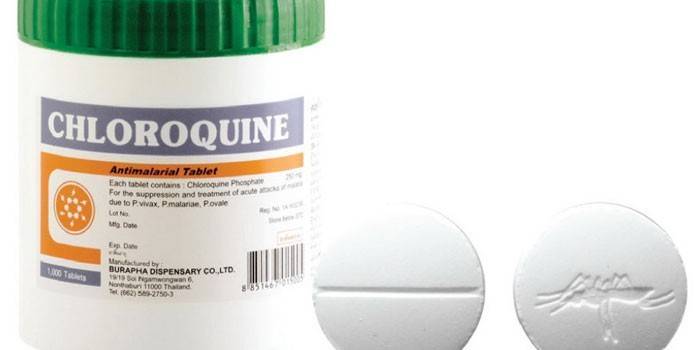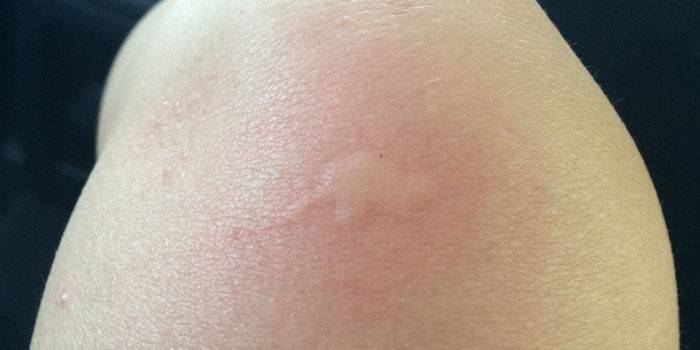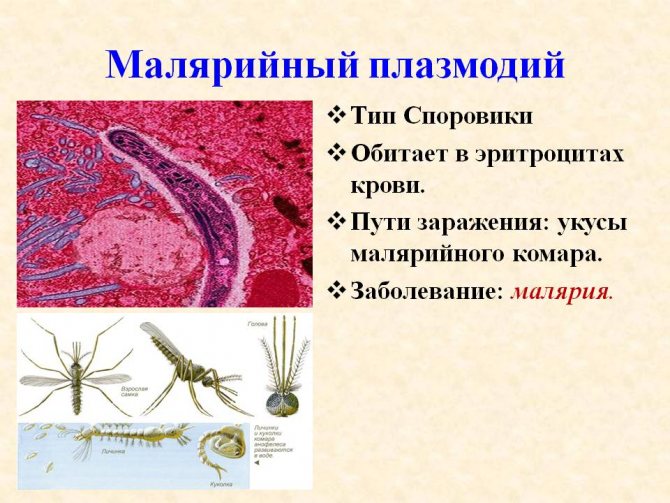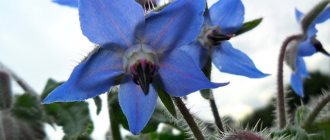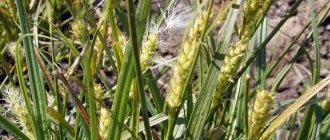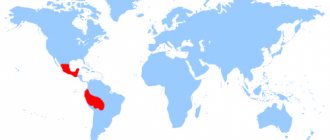Malaria is an insidious disease that kills millions of people every year. Despite the existence of effective medications, treating the disease is not an easy task. The fact is that the causative agent of the infection is the parasitic microorganism malaria plasmodium. His development cycle is quite complex. For this reason, the disease can proceed in a latent, chronic or acute form, and also have relapses.
In our publication, I would like to talk about who is the intermediate and main host of the malaria plasmodium. We will also consider the features of the reproduction of the causative agent of the disease, its life cycle.
The structure and routes of infection with malaria plasmodium
Malaria, or swamp fever, is caused by various types of protozoa. Features of the structure and distribution of plasmodium allow it to easily penetrate into the erythrocytes of people.
Plasmodia are carried by female Anopheles mosquitoes. Mosquitoes become infected when they are bitten by a malaria patient or host. The salivary fluid of the parasitic mosquito contains sporozoites. The human body is an intermediate host for the Plasmodium.
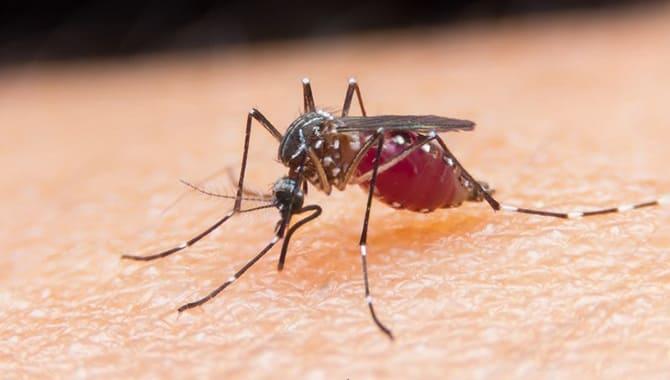
The path of transmission of the pathogen is transmissive. This means that the malaria infection is transmitted by insect bites.
In addition, Plasmodium can be transmitted through the placenta from a pregnant mother to a child and through blood transfusion.
Role of the main and intermediate host in cycles
To describe a parasitic life form, 3 concepts are very important: the main, intermediate and reservoir host.
The main host for the parasite is the species in which sexual reproduction takes place. Here, the male and female individuals mate, resulting in an individual with a different genotype. The final host is also the organism in which the hermaphroditic parasite is located. After all, fertilization still occurs, although the result of this process is the appearance of a clone, and not a genetically new individual.
An intermediate host is an organism in which asexual reproduction takes place. It is needed in order to increase the number of larvae.
The reservoir host is the organism that only feeds and contains the parasite.


Bite of a female anopheles mosquito
The mosquito is the main host of the Plasmodium malaria, and the human is the intermediate. This parasite does not have a reservoir host.
However, the main owner cannot be regarded as the main link in the life cycle. Rather, this concept should be interpreted as the environment where the development cycle ends.
Why does the malarial plasmodium need a human body, if its main reproduction occurs in the body of a mosquito? What is the general meaning of intermediate hosts?
This is explained by the ecological laws of the formation of a stable state of the population. Usually, the parasite does not seek to kill its host, because then it loses not only a food source, but also a comfortable living environment. There are exceptions to this rule, but they are extremely rare and represent a very narrow specialization of the parasite.
The malaria plasmodium needs humans in order to increase the number of individuals during the non-sexual stage of development. In the body of a mosquito, Plasmodium could not reach such a number.Having one host in the world of parasites increases the risk of extinction. However, too much interdependence of the final and intermediate hosts also increases the degree of risk. The best option has long been invented by evolution - this is the transition from parasitism to symbiosis. However, in the malaria plasmodium, such a developmental path has not yet been observed.
Where Plasmodium Plasmodium Lives: Anopheles Mosquito and Its Habitat
A humid tropical climate is optimal for Plasmodium. It is in these conditions that the Anopheles mosquito lives. The incidence of malaria fever is very common in tropical countries, southeast Asia, Australia, New Zealand, Papua New Guinea, Central and Latin America.
Each year, 300-450 million new cases of swamp fever are recorded. 1-2% of patients die. A large number of people with malaria infection is associated with resistance of plasmodia to antimalarial drugs, and mosquito-carriers - to the effect of repellents. Despite the fact that Plasmodium malaria belongs to tropical parasites, people from Europe and Russia are infected with it. This phenomenon is associated with constant migration and tourism.
General characteristics of the microorganism
Plasmodium is a representative of the most primitive group of animals - the subkingdom of Unicellular or Protozoa. They are characterized by the following signs:
- the body consists of one cell, which performs the functions of the whole organism;
- the presence of a kernel;
- lack of a dense cell wall;
- movement with the help of specialized structures: cilia, pseudopods, flagella;
- the presence of digestive and contractile vacuoles;
- gas exchange through the cell surface;
- sexual and asexual reproduction.
Plasmodium malaria belongs to the type of sporozoans and represents the sub-kingdom of protozoa, leading a parasitic lifestyle. This single-celled microorganism becomes the cause of a fatal disease. Plasmodium, unlike other multicellular microorganisms, consists of one cell, which is able to breathe, move around, feed and reproduce.
Toxins secreted by parasites lead to high fever, episodic attacks of fever. The time interval after which the attack will resume depends on the type. This period coincides with the destruction of red blood cells, which carry oxygen throughout the body. Signs of anemia appear.
Some types of malaria plasmodia can live in the environment:
- three-day, causing malaria of the plasmodium vivax type (develops in the human body from one to three weeks, sometimes the appearance of the first signs may begin in six months);
- malaria provocateurs of the four-day type are malariae (the duration of the incubation period is one month);
- the development of malaria occurs as a result of the bite of a falciparum mosquito that lives in tropical countries (the incubation period lasts from 10-20 days);
- another three-day species is ovale (the incubation period lasts about two weeks);
- a two-day-old species of knowlesi leads to severe consequences.
The parasite enters in several ways. The most important is the bite of the Anopheles mosquito. But there are other ways of getting the infection, for example, blood transfusion. The infection can spread to the fetus during pregnancy or during childbirth from a sick mother.
The intermediate host of Plasmodium malaria is a human. During the bite, saliva is released, which contains sporozoites. They have a curved, elongated body shape, about 15 microns in size. Plasmodium malaria, in relation to humans, has a parasitic effect.
Where does the malaria plasmodium live? Warmth is necessary for the development of the parasite. Therefore, the risk of contracting the disease increases in countries with warm climates.The most dangerous countries are considered to be Brazil, Vietnam, Europe, Colombia. There may be an infection with Plasmodium malaria on the coast of the Red and Mediterranean Sea. Ukraine, Kazakhstan, Georgia, Azerbaijan are no exception. Found in Russia and Belarus.
The stages of the cycle of the malarial plasmodium initially occur in the body of the female mosquito - this is sporogony (during sexual reproduction), the further development of parasites continues in the blood and liver cells of humans.
Consider what the developmental cycle of plasmodium malaria looks like.
The intermediate host of Plasmodium malaria is the human body.
From mosquitoes to people
The female mosquito is the carrier and the main host of the malaria plasmodium. It is in her body that sporozoites develop, during a bite they penetrate into the blood, then into the cells of the human liver, as well as erythrocytes.
Two subsequent stages of development of parasites - schizogony (tissue and erythrocytic) occur inside the human body, where asexual reproduction of malaria plasmodium occurs, the result of which is the formation of merozoites.
What happens at this stage of development:
- parasites infect liver cells and vascular mucous membranes;
- destroy red blood cells, steal nutrients;
- multiply - form up to 20 new merozoites;
- form genital gamont, which subsequently enter the stomachs of female mosquitoes.
From people to mosquitoes
New mosquitoes become carriers of malaria when bitten by a person whose blood contains plasmodium germ cells (gamont). The development cycle resumes:
- in the stomach of an insect, malaria plasmodia are fertilized, develop;
- there is their mass reproduction;
- a mosquito bites a person again, infecting him with plasmodium;
- there is a subsequent spread through the tissues of the human body.
The result is the destruction of red blood cells, leading to debilitating bouts of malaria.
1. Arthropods have heteronomous body segmentation, which means that in different parts of the body, the segments have a different structure. Groups of similar segments are distinguished into special parts of the body (tagma). Usually there are three sections: head, chest and abdomen. Parts of the body can merge with each other.
The number of segments that make up the body of arthropods varies in different systematic groups. Segments can merge with each other, with a tendency towards a decrease in the number of body segments. The most constant number of segments of the head section, which consists of the head lobe, or acron, and four following segments. The chest and especially the abdomen are more variable in terms of the number of segments. The body ends with an anal blade - telson.
2. The limbs of arthropods consist of several segments, which are movably connected to the body with the help of joints. The limbs located in different parts of the body are often specialized to perform different functions - grabbing and chopping food, movement, breathing, and others. The limbs on the abdominal segments disappear in many arthropods.
3. The body of arthropods is covered with a chitinous cuticle, which forms the outer skeleton. It distinguishes between hard plates - sclerites and soft membranes for their connection. Each segment of the body has four sclerites: the dorsal plate, tergite, is located dorsally, the abdominal plate, or sternite, is located ventrally, and lateral plates are located on the sides between them.
The cuticle has a complex composition: it contains lipids, proteins and chitin - a chemically stable nitrogenous organic elastic substance. The hardening of the cuticle is due to the fact that chitin can be impregnated with carbonic lime (for example, in crustaceans and millipedes) or hardened proteins (arachnids, insects).
The growth of arthropods is accompanied by molting, which is associated with the presence of a hard external skeleton.The old cuticle is periodically shed and the skin epithelium secretes a new soft cuticle. In this short period, an increase in the body size of arthropods occurs. After the cuticle has hardened, the animal retains its body size until the next molt.
We suggest that you familiarize yourself with: Medicines for scabies name
In some arthropods, not only the integuments of the body, but also part of the intestines, genital ducts and other organs are lined with cuticles. This excludes the possibility of the development of cilia and therefore there is no ciliated epithelium in the body of arthropods.
4. The musculature of arthropods is represented by separate muscle bundles. The muscles have a striated structure and attach to the external skeleton.
5. The body cavity of all arthropods is of mixed origin. During embryonic development, a secondary cavity is formed in them - the whole. Subsequently, the walls of the coelomic sacs are destroyed, and the coelomic cavities merge with each other and with the remains of the primary body cavity. Thus, a mixed body cavity, or mixocele, is formed, in which the internal organs are located.
6. The digestive system of arthropods consists of three sections: the anterior, middle and hind intestines. The anterior and posterior parts of the intestine are lined with cuticles. There are glands that secrete digestive enzymes.
7. The circulatory system of arthropods is not closed: there are the main blood vessels - the aorta and arteries, from which the hemolymph flows into the body cavity and washes the internal organs. Then it enters the blood vessels and the heart again.
The hemolymph of arthropods partly corresponds to real blood, and partly to coelomic fluid. The functions of the hemolymph basically correspond to those of the blood.
8. Respiratory organs of arthropods are diverse and correspond to their habitat. The organs of water respiration, the gills, are partially or completely modified limbs. The organs of air respiration of terrestrial forms, the lungs, also represent modified limbs. In higher arthropods, the respiratory system is the tracheal system.
9. The nervous system consists of a paired brain, a periopharyngeal nerve ring and an abdominal nerve chain. The brain mostly consists of three divisions: protocerebrum, deutocerebrum, and tritocerebrum. Sometimes there is a fusion of the ganglia of the abdominal nerve chain and the formation of large nerve nodes.
10. The excretory system of arthropods is represented by modified whole products - coxal glands or special organs that arose within the type of arthropods and are called malpighian vessels.
11. Arthropods are dioecious animals that reproduce sexually. Usually males and females are morphologically different, sexual dimorphism is revealed. The development of arthropods can be direct or with metamorphosis (complete or incomplete).
When the blood of a person suffering from malaria is sucked up, malaria plasmodia, which are at different stages of development, enter the mosquito's body, but only gamont (immature sexual forms) undergo further development. All other Plasmodia die. In the stomach of a mosquito, malaria plasmodia pass a difficult path.
Fig. 6. The cycle of development of malaria plasmodium in the body of a mosquito. Female gamete (17). Formation of the male gamete (18). Fertilization (19). Ookineta (21). Oocyst development (22 and 23). The release of sporozoites from the oocyst (24). Sporozoites in the salivary gland of the malaria mosquito (25).
Types of malaria plasmodia
Various plasmodium malaria cause the classic form of paroxysmal fever. Clinically, they differ in the severity and duration of the disease. You can determine the type of parasite in the laboratory - this method is more informative.
- Plasmodium vivax is the malarial causative agent of 3-day fever.
- Plasmodium malariae causes a four-day swamp fever.
- Plasmodium falciparum is the causative agent of tropical malaria.
- Plasmodium ovale is the causative agent of oval malaria (similar to three days old).
All four types of malaria infections are carried by mosquitoes and are dangerous to humans.
Ultimate host
The developmental cycle of Plasmodium malaria continues in the mosquito's body. It becomes infected with the parasite when bitten by people with malaria. The mosquito is the final host, as it reproduces dangerous cells sexually.
When bitten, gametocytes from erythrocytes enter the mosquito's bloodstream. Here they turn into full-fledged germ cells. The fertilization process takes place in the intestines of the insect. As a result, numerous motile cells of the parasite are formed.
Further, the life cycle of the Plasmodium malaria repeats itself. Its cells accumulate in the salivary glands of the mosquito, and when bitten again fall into the human bloodstream.
Life cycle of the Plasmodium malaria
For the cycle to occur, the presence of the main and intermediate host is necessary.
Maturation includes two stages: asexual (schizogony) and sexual (sporogony). Sporozoites are forms of malarial infection that are carried by mosquito saliva into the human bloodstream. The asexual stage occurs in the human body, and the sexual stage occurs in the blood of an insect.


The developmental cycle of Plasmodium malaria is a unique biological phenomenon.
Schizogony
Schizogony precedes sexual reproduction of plasmodia. In the asexual stage, three phases are distinguished: extra-erythrocytic, erythrocytic and gametogony phase. Also, in the developmental cycle of plasmodia, vivax and oval distinguish an additional period, the so-called hibernation. Their sporozoites can "sleep" for a long time in liver cells. This is due to the heterogeneity of their cellular maturity.
Exo-erythrocytic schizogony
Sporozoites, which enter the human blood when bitten by an insect, penetrate the liver at high speed. Then they are introduced into hepatocytes without destroying them.
In hepatocytes, the extra-erythrocytic phase of the development cycle of malaria plasmodium begins. This is how a new type of parasite appears - merozoite, which destroys liver cells and enters the bloodstream again. After half an hour, tissue merozoites are introduced into red blood cells to undergo a further stage of maturation. The duration of this phase is from 7 to 15 days.
Hibernation period
Pl. vivax and ovale have a very special life cycle. They go through the phase of bradisporozoites, which, after being introduced into hepatocytes, pass into inactive forms - hypnozoites. The latter can remain in the hibernation phase for a long time (from six months).
Erythrocytic schizogony
After the penetration of merozoites into red blood cells, the plasmodium first transforms into trophozoite, schizont, and then into morula. Erythrocyte merozoites are formed by multiple divisions. This phase repeats cyclically.
The duration of erythrocytic schizogony in Pl.malariae is three days, in other species (Pl. Ovale, Pl. Vivax, Pl. Falciparum) - two.
This feature is reflected in the clinic of malaria fever.
Gametogony
After the completion of several cycles of asexual development, gametogony begins. This stage ends in the mosquito's body.
Sporogonia
After being bitten by an infected person, gammoths enter the mosquito's stomach. They are the female reproductive cells of the plasmodium. After this, gametocytes begin to form.
In a mosquito, the sex cells are fertilized and zygotes are formed. Subsequently, oocysts are obtained from them. Through multiple mitotic divisions, oocysts acquire a new, highly infectious, form - sporozoite. They migrate to the salivary glands of insects, where they can stay for several months. During a bite, sporozoites first enter the insect's oral cavity, and then into the human body.
Sizes of malarial spasmodium
The life cycle of human malaria pathogens consists of the following stages: sexual reproduction in mosquitoes (sporogonia); asexual reproduction in liver cells (tissue schizogony); asexual reproduction in erythrocytes (erythrocytic schizogony); the formation of sexual forms in erythrocytes - gametocytes.
Sporogonia
In the body of nopheles of a patient with malaria or a parasite carrier, gametocytes enter the insect's stomach: macrogametocytes (female) and microgametocytes (male). After the restructuring of the nuclear apparatus, the macrogametocyte turns into a macrogamete. 4-8 microgametes are formed from a microgametocyte.
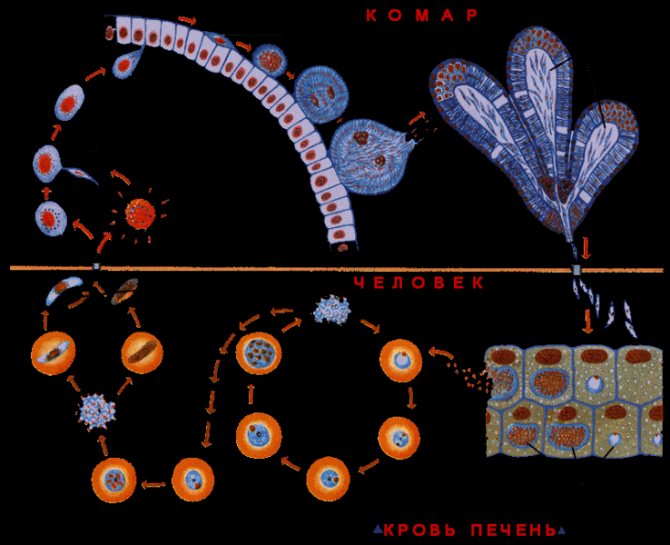

In the stomach of the mosquito, fertilization of macrogametes with microgametes takes place. The result is a mobile zygote called ookinete. The latter penetrates the wall of the stomach and an oocyst is formed on its outer side.
The nuclei in the oocyst divide many times, after which sporozoites are formed inside the oocyst — elongated fusiform bodies 11-15 microns in length.
The oocyst membrane ruptures and the sporozoites enter the salivary glands. When bitten by a mosquito, sporozoites enter the human body. The duration of sporogony depends on temperature. At t ° below 16 ° sporogony does not occur.
Tissue schizogony
Plasmodium malaria. Sporozoites can be in human blood for no more than one hour. During this period, they penetrate into the cells of the liver parenchyma, where schizonts are formed. Their development has been studied in detail on the species of plasmodia parasitizing in monkeys and partially on human plasmodia.


The sporozoite, having penetrated the liver cell, rounds up, increases in size, the nucleus of the formed schizont is sequentially divided. By the 6-12th day, the parasite fills the entire hepatic cell, pushing the cell nucleus to the periphery.
The size of the parasite is up to 60 microns. Such a large schizont breaks up into a large number (thousands and tens of thousands) of merozoites.
In P. falciparum, these latter penetrate into erythrocytes, and later parasites develop only in erythrocytes; in other species, merozoites penetrate into erythrocytes, as well as into the cells of the liver parenchyma, where they undergo subsequent cycles of tissue schizogony. Duration of tissue development in P. vivax vivax and P. ovale 7-8 days, P. malariae 11-12 days.
Erythrocytic schizogony
Tissue merozoites penetrate into the erythrocyte and form schizonts, which break down into erythrocyte merozoites. The erythrocytes are destroyed and the released merozoites settle in new erythrocytes.
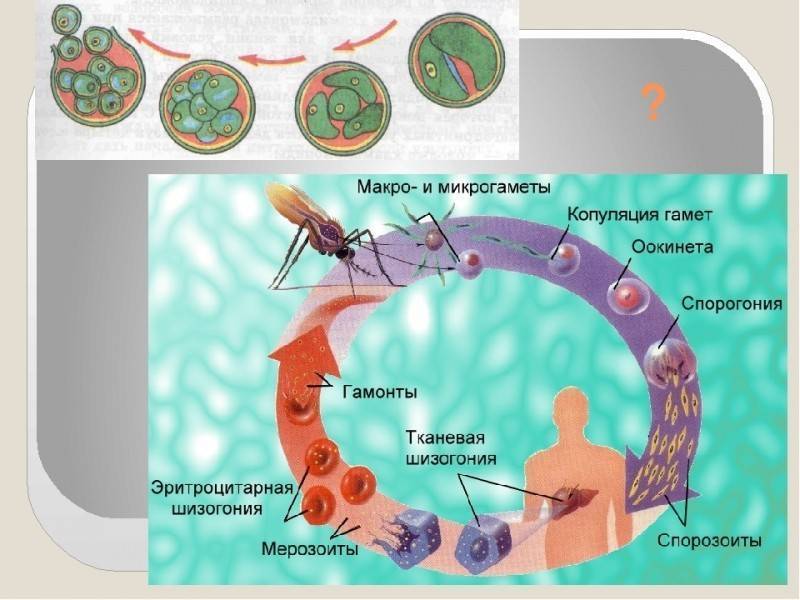

Plasmodium malaria. And gametocytes are formed due to some part of merozoites. The latter can circulate in the blood for a long time, their further development (sporogony) occurs in the vector. Different stages of development of malaria pathogens in the blood are clearly distinguishable by morphological characteristics. However, P. vivax vivax cannot be distinguished from P. vivax hibernans.
The morphological features of the pathogens themselves and the changes they cause in erythrocytes make it possible to determine the type of parasite on preparations (smears and thick drops of blood). In the erythrocyte cycle of development of plasmodia, the following stages are distinguished: rings, schizont, merulation, young and formed gametocytes.
The size and shape of the parasite at different stages of development, the duration of the entire schizogony cycle, the number of formed merozoites and their size, the number of grains (lumps) of pigment, their color and location in the parasite, the shape, size and other signs of gametocytes, as well as changes observed in themselves invaded erythrocytes, serve as signs that distinguish one species from another.
The development of erythrocyte stages of all types of human malaria pathogens occurs in the circulating blood. The exception is P. falciparum, in which only ring stages and gametocytes are found in the blood; further development of schizonts up to the release of merozoites from erythrocytes occurs in the capillaries in which the deposited blood is located.
Symptoms and Features of Different Types of Malaria
In the clinic of swamp fever, the incubation period, the height (acute phase), the latent period and the relapse phase are distinguished. Incubation in vivaxi oval-plasmodia lasts 7-21 days, in a four-day one - about a month, in a tropical one - two weeks. The following syndromes are characteristic of all types of malaria infection:
- feverish,
- hepatolienal,
- anemic.
Malaria infection usually begins acutely with complete health. Sometimes malaria is preceded by prodromal phenomena (weakness, low-grade fever, headache).
The cyclical nature of the Plasmodium life cycle determines the clinical course of malaria fever.
On the first day, the temperature can rise to high numbers, and then drop to normal values. In the future, the fever becomes intermittent - daily fluctuations usually exceed 1 ° C, but the temperature does not return to normal.
During a febrile paroxysm, chills, fever and sweating change sequentially. A febrile seizure usually begins in the morning with severe chills. The temperature rises gradually. During attacks, nausea, migraine and muscle pain appear. The skin is cyanotic, very cold to the touch.
Dangerous symptoms
The genus Malaria mosquito has more than 400 species. Do not think that their representatives live only in African countries. They are ubiquitous except in the northern regions. The characteristic features of adult insects are an elongated body, long legs and proboscis, and a short head. Their wings are covered with scales along the veins.
The bite of such a mosquito is the most common route of infection with malaria. But non-sterile medical instruments can also be the cause. The first symptom of the disease is the onset of fever. As erythrocytes are destroyed, there is an increase in the size of the spleen, hardening of the liver, and the development of anemia.
So, the life cycle of the malaria plasmodium is characterized by a change of hosts: intermediate and final. The first is man. In the cells of his blood, asexual reproduction of Plasmodium occurs by schizogony. The ultimate host of the parasite is a mosquito. In his body, the cells of the parasite reproduce sexually. The development of malaria occurs only if there is a possibility of repeating the stages of the life cycle. Otherwise, a dangerous disease does not develop.
Malaria diagnosis
The symptomatology of the disease is decisive for the diagnosis of malarial infection. In addition, an epidemiological history plays an important role in the diagnosis.
The most reliable signs of malarial fever are:
- attacks of intermittent fever;
- hepatolienal syndrome;
- hemolysis leading to anemia;
- epidemiological history: visits to patients in tropical countries, blood transfusions in the last three months.
The diagnosis can be confirmed using laboratory diagnostics. An analysis that detects Plasmodium is called thick blood droplet microscopy.
Plasmodium type and life cycle stage are determined from a blood sample.
It is advisable to take biological material for research during a febrile attack. During this period, the parasite Plasmodium malaria is best identified.
As auxiliary methods, various serological methods are used (determination of antibodies to plasmodium in the blood).
Differential diagnosis is carried out with brucellosis, typhus, tuberculous meningitis and other infectious diseases.
Question 17. Phylogenesis of the type of protozoa. Colonial protozoa.
The simplest.
The phylogenesis of protozoa actually proceeded in parallel with the development of multicellular animals, which was reflected in the formation of the simplest analogs of organ systems, the so-called organelles.However, most protozoa move actively with the help of special structures that produce rhythmic movements -
flagella or cilia
.
Colonial Protozoa,
consisting of several more or less closely related individuals, to a certain extent resemble multicellular organisms, especially those in which the life of one indivisible, isolated from the general composition of the colony, is impossible. The difference between such colonies of Protozoa and multicellular organisms is that in the former, individual cells or organisms are homologous and homodynamic, that is, equivalent, perform all functions such as movement, feeding, excretion and reproduction, while in the latter there was a division of labor, and the cells that make up the multicellular organism became only analogous and heterodynamic, assuming different functions and differentiating as a result of this and morphologically.
Share the article on social media. networks:
A modern approach to malaria treatment: a therapy regimen
If a person is suspected of swamp fever, then he is subject to compulsory hospitalization in an infectious diseases hospital. He is prescribed bed rest and drinking plenty of fluids.
In the hospital, infusions are carried out to correct the water-salt balance and detoxify. Immunostimulating and symptomatic therapy is also prescribed. In severe cases, they resort to extracorporeal methods of blood purification - hemosorption and dialysis.
Initially, quinine was used for therapy. This medicine was obtained from the cinchona tree. Today, synthetic drugs are used. The latter act more mildly and cause adverse reactions less often.
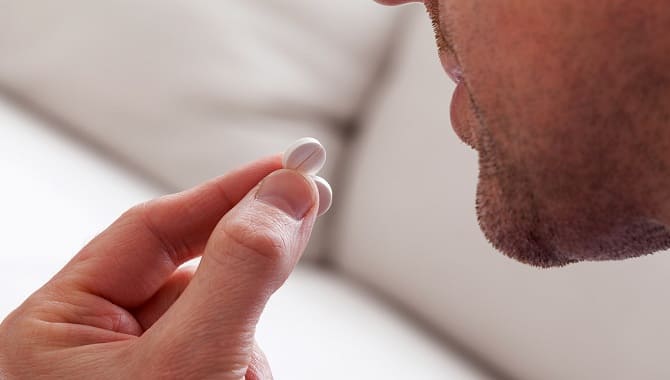

Plasmodium is rapidly developing resistance to new drugs. Therefore, quinine is still relevant today.
The classification of drugs for malaria is extensive. Usually appoint:
- Tissue schizontocides. They act exclusively on exoerythrocytic species of plasmodium (Chinocid, Primaquine).
- Hematocides. This group of agents affects the intra-erythrocytic forms of plasmodium. These include drugs with chloroquine, pyrimethamine, mepacrine and quinine (Hingamin, Chloridine).
Chemotherapy is carried out according to standard regimens, which are selected taking into account the type and severity of malarial fever. For example, for vivax malaria, a 3-day course of Chloroquine therapy and a ten-day intake of tissue schizontocides are sufficient.
Asexual reproduction
The intermediate host of the parasite is humans. It is in his body that Plasmodium reproduces asexually. This happens by dividing the cell in two.
How does this organism get into the human blood? This occurs when a mosquito bites infected with Plasmodium malaria. The stages of its development, which occur in the organism of the intermediate host, can be divided into several stages.
First, the plasmodium with the blood flow enters the cells of the human liver. Here he reproduces in a schizogonic way. In the course of this process, the nucleus is repeatedly divided, around each of the formed parts, the cytoplasm is isolated. After that, the newly formed cells divide again.
After several such divisions, the cells of the parasite enter the bloodstream. Their development takes place in red blood cells. Plasmodium continues to divide repeatedly, while destroying blood cells. Their defeat occurs quickly enough - a maximum of 72 hours.
When erythrocytes are destroyed, toxic waste products of plasmodium enter the bloodstream. It is they who cause fever attacks in a person. As a result of several successive divisions from the cells of the parasite, precursors of germ cells are formed, which are called gametocytes.


Traditional methods of treatment
Traditional medicine offers many treatments. Doctors do not recommend using them as monotherapy. Sometimes folk remedies can be used along with medicines.
Traditional treatments for malarial fever:
- Tincture of parsley. Kill 1 kg of parsley in a blender.Add 0.5 l of vodka to the mixture. Insist a week in a dark place. Strain through cheesecloth, take 1 tbsp. 3 times a day. Before use, dilute a portion of the tincture in a glass of water.
- Tincture of black radish. Grate 1 root vegetable, add 500 ml of vodka to the pulp. Insist for a week in a dry, dark place. Take 1 tbsp. tincture, diluted in a glass of water at night.
- Chicory powder. 1 tsp Dissolve chicory in a glass of warm milk. The drink can be drunk up to three times a day.
- Barberry. The fruits of barberry are consumed in their pure form. The leaves of the plant can be used to brew medicinal teas.
- Saline solution. Fry sea salt in a pan without oil. After that, dissolve 1 tbsp. fried salt in a glass of mineral water. Drink in the phase of active sweating.
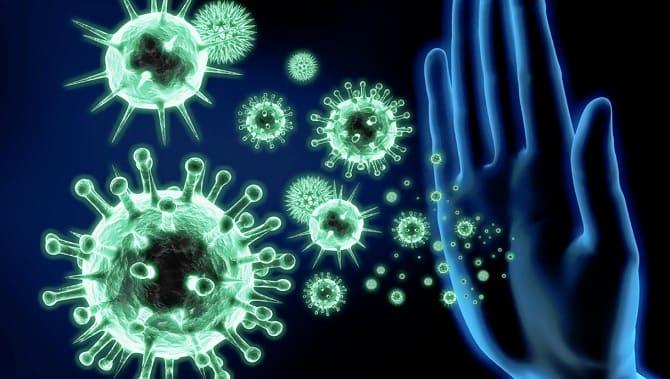

Most folk remedies are aimed at stimulating natural immunity. The saline solution helps to retain moisture in the body, thereby preventing dehydration.
I. Native smear method
- Rub a grain of feces (30-40 mg) on a glass slide in a drop of 50% glycerin solution (in water or in saline solution) until a uniform suspension
- Cover with a cover slip
- Explore
On one slide, two drops of faeces suspension are prepared at a distance of 3-4 cm from each other using different faeces sticks.
This method is ineffective, especially with a weak invasion. The method is used in addition to other methods. Advantages: it can be used for examining a large group of the population, it is not labor-consuming, does not require special equipment, special training.
- Soak square plates of cellophane (22x30 mm) in phenol, then in a mixture of distilled water (100 ml) glycerin (100 ml) 3% green malachite (1 ml) for 24 hours. GLYCERIN DEGREES THE CELLOFAN PLATE, PHENOL DEGREES, brightens the drug. MALACHIT COLORS GREEN, which improves their observation in the native preparation.
- Spread a grain of feces (100 mg) on a glass plate (25x35 mm) - the preparation is cloudy, eggs are difficult to distinguish, because they are colored yellow-brown by feces pigment.
- Cover with a damp cellophane plate (the drug is dehydrated, defatted and clarified, the eggs turn greenish. The drug is easier to study).
- Rub in cellophane with a glass slide.
- Keep the drug for an hour at room temperature.
- Then incubate for 30 minutes in a drying cabinet at 400C.
- Explore.
We offer you to familiarize yourself with: Cockroaches where they live and breed
With this method, a large volume of faeces in the preparation can be examined. Most accurate method.
It is not used when examining dwarf tapeworm eggs and hookworms. they quickly collapse.
Thanks to this method, permanent preparations can be made.
III. Telemann's method - sedimentation.
Based on the difference in density between eggs and solution. A solution of a lower density is used than helminth eggs (eggs are heavier). Ether-formalin, ether-acetic solutions.
- Feces (1.5 g) are mixed in a glass with 50% hydrochloric acid solution (5 ml) or with 10% sodium hydroxide solution - NaOH. Pass the mixture through a metal filter.
- Then pour the mixture into a test tube with ether (5 ml).
- Close with a stopper, shake until a uniform suspension.
- As a result, three layers of suspension are formed in the test tube.
- Drain the top two layers.
- Add water to the sediment, shake.
- Centrifuge.
- Examine 2 drops of sediment with a 7X10 microscope magnification.
- With this method, you can examine the eggs of all helminths.
What harm to human health is caused by malaria plasmodium
Malaria infection destroys hepatocytes and red blood cells. The death of red blood cells (hemolysis) can lead to the sudden death of a person. The destruction of hepatocytes causes severe hepatitis with acute liver failure.
What else is dangerous to humans and what complications does malarial fever lead to:
- falling into a malarial coma;
- hepatosplenomegaly (enlargement of the liver and spleen) with threatening rupture of organs;
- shock due to intoxication with the waste products of plasmodium (with swamp fever, such a shock is called malarial algid);
- swelling of the brain;
- disseminated intravascular coagulation syndrome;
- neurological abnormalities.
In addition, vivax chloroquine-resistant plasmodia pose a serious epidemic hazard. Due to its resistance to treatment, Plasmodium quickly spreads in the patient's body and leads to inevitable death.
Features of the organization of the Protozoa
Plasmodium is a representative of the most primitive group of animals - the subkingdom of Unicellular or Protozoa. They are characterized by the following signs:
- the body consists of one cell, which performs the functions of the whole organism;
- the presence of a kernel;
- lack of a dense cell wall;
- movement with the help of specialized structures: cilia, pseudopods, flagella;
- the presence of digestive and contractile vacuoles;
- gas exchange through the cell surface;
- sexual and asexual reproduction.
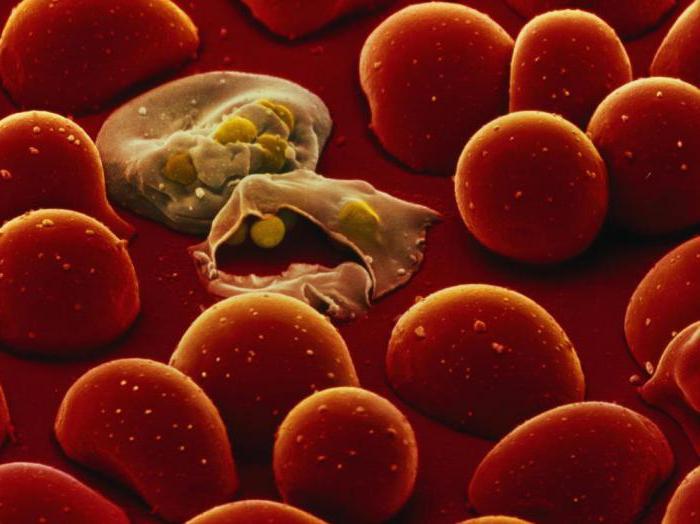

How not to get malaria
Distinguish between specific and non-specific prophylaxis. Nonspecific is the control of mosquitoes of the genus Anopheles. They live in places with high humidity, so they carry out mass pest control and drying of swamps.
For personal safety, residents of tropical countries are advised to use special means against parasites (repellents) and close windows with mosquito nets.
Specific prophylaxis includes preventive therapy with antimalarial drugs. It can only be appointed for a short period. Suitable for people who travel to areas endemic for malaria fever for a short period.
Malaria Plasmodium Plasmodium (class Sporozoa, Sporozoa) order Haematosporidia (blood sporozoans) are the causative agents of malaria. The following types of malaria plasmodia are known parasitizing in humans: R. vivax is the causative agent of three-day malaria, R. falciparum is the causative agent of tropical malaria, R. malariae is the causative agent of four-day malaria, R. ovale is the causative agent of oval-malaria, close to three days. The first three species are widespread in tropical and subtropical climatic zones, the last - only in tropical Africa. All species are similar morphologically and life cycles, differing from each other in the details of the structure and some features of the development cycle, which are manifested mainly in the duration of its individual periods.
The life cycle of malaria plasmodia is typical for sporozoans, including stages of asexual reproduction in the form of schizogony, sexual process and sporogony. The final host of the parasites is the mosquito r. Anopheles, and only man is intermediate. The mosquito is also a carrier. Therefore, malaria is a typical anthroponous vector-borne disease.
With the saliva of an infected mosquito, when bitten, plasmodia enter the blood of a person (Fig. 19.10). The development of parasites in the human body occurs synchronously. With the blood stream, they are carried throughout the body and settle in the cells of the liver. Here they grow and reproduce in schizogony in such a way that one parasite is divided into thousands of daughter individuals. At the same time, liver cells are destroyed and parasites, called merozoites at this stage, enter the bloodstream and penetrate into erythrocytes. From this moment, the erythrocyte part of the plasmodium development cycle begins. The parasite feeds on hemoglobin, grows and multiplies schizogony. Moreover, each plasmodium is divided into 8-24 merozoites. After the destruction of the erythrocyte, merozoites enter the blood plasma and from there into new erythrocytes, after which the entire cycle of erythrocytic schizogony is repeated.
Historical aspects
The historical focus of this disease is Africa. From this mainland, malaria spread throughout the world. At the beginning of the 20th century, the number of cases was about 700 million.in year. One in 100 infected died. The level of medicine of the XXI century has reduced the incidence to 350-500 million cases per year and reduced mortality to 1-3 million people per year.


For the first time, as a separate disease, malaria was described in 1696, at the same time the official medicine of that time proposed the treatment of pathology symptoms with cinchona bark, which had been used by folk medicine for a long time. The effect of this drug could not be explained, because in a healthy person, chin, when taken, caused complaints similar to fever. In this case, the principle of similar treatment was applied, which was preached in the 18th century by Samuel Hahnemann, the founder of homeopathy.


The name of the disease familiar to us has been known since 1717, when the Italian physician Lancini established the cause of the development of the disease, coming from the "rotten" air of swamps (mal`aria). At the same time, the suspicion arose that mosquitoes were the culprits of the transmission of the disease. The 19th century brought many discoveries in establishing the causes of malaria, describing the development cycle and classifying the disease. Microbiological studies made it possible to find and describe the causative agent of the infection, which was named malaria plasmodium. In 1897 I.I. Mechnikov introduced the pathogen of the pathology into the classification of microorganisms as Plasmodium falciparum (a class of sporozoans, a type of protozoa).
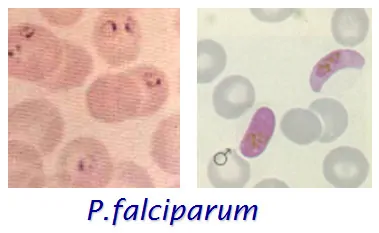

In the 20th century, effective drugs were developed for the treatment of malaria.
Since 1942 P.G. Müller proposed the use of DDT, a powerful insecticide, to treat the zone of foci of the disease. In the middle of the 20th century, thanks to the implementation of the global malaria eradication program, it was possible to limit the incidence to 150 million per year. In recent decades, the adapted infection has launched a new attack on humanity.
Plasmodium malaria: brief information about the microorganism
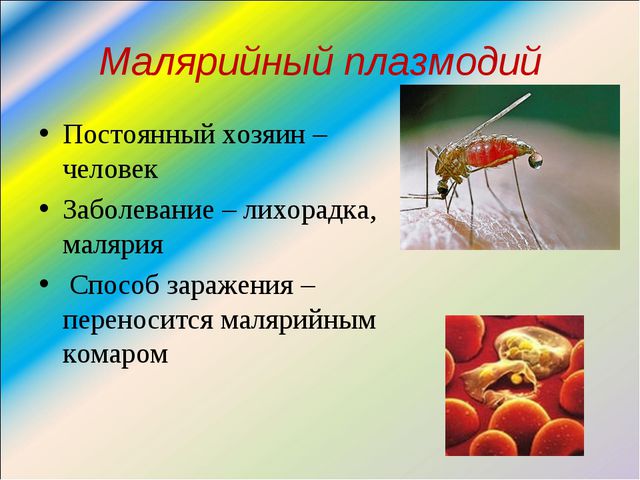

Plasmodium malaria is the simplest microorganism that belongs to the sporozoa type. As a rule, pathogens are transmitted to humans through the bite of an Anopheles mosquito. Only the female insect carries the infection.
In the malaria plasmodium, the mosquito itself acts as the main host, in the body of which the parasite reproduces sexually. A human is considered an intermediate host in a microorganism. In the body of the latter, asexual reproduction of the microorganism occurs.
Varieties of Plasmodium
Depending on the incubation period and symptoms, malaria is classified into the types shown in the table.
Name of the disease
Description
The causative agent of this disease is plasmodium vivax. The incubation period depends on the functioning of the immune system and ranges from 7 days to 15 months. Fever attacks recur every three days
The structure of the parasite
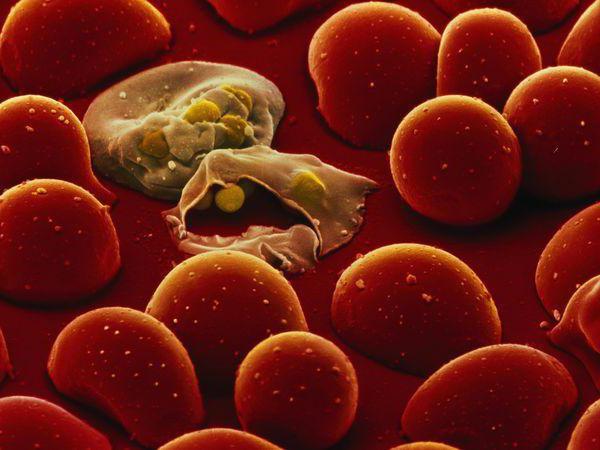

The cycle of development of such a parasite is reflected in the structure of the malarial plasmodium. In the early stages, the causative agent of the infection is presented in the form of the so-called schizonts. This asexual form of the parasite has the form of a ring, which consists of a nucleus and a rough cytoplasm surrounded by a vacuole. In the future, the microorganism develops pseudopods. Sexually mature malarial plasmodium lacks a vacuole, and the cytoplasm acquires a reddish tint due to the absorption of hemoglobin in the blood of the host.
Stages of Plasmodium development
The entire life cycle of the development of malarial plasmodium is divided into the following stages:
- Reproduction of a microorganism in the human body.
- Rebirth in the body of the main host - an insect.
These are almost identical parts passing through different organisms.
Transmission of a microorganism to humans from an insect
In the human body, the life cycle of the Plasmodium occurs according to the following scheme:
- When a person is bitten through insect saliva, fertilized sporozoites enter the bloodstream and move to the liver. Here sporozoites are transformed into trophozoites and schizonts. In the tissues of the liver, they begin active asexual reproduction, which is called schizogony.As a result of this process, sporozoites become merozoites. The latter penetrate into red blood cells, absorb hemoglobin and continue active reproduction.
- Further, merozoites destroy blood cells, leave them and are introduced into other erythrocytes. This stage of development takes place with a certain cyclicality. At the same time, the infected person has attacks of fever, accompanied by chills and fever. This process does not stop until the merozoites reach the required amount.
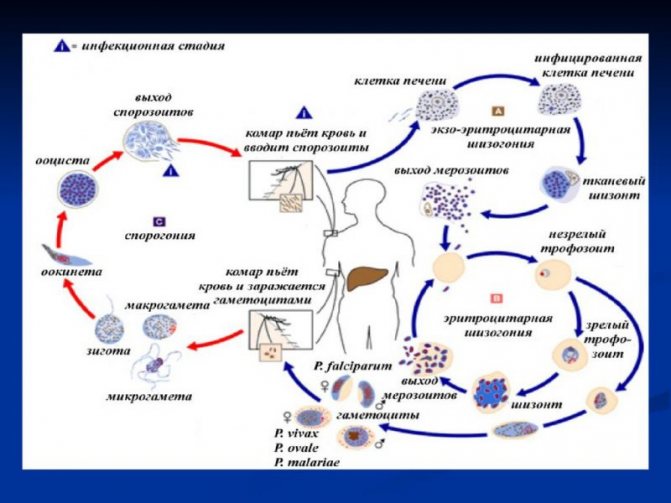

After this, the life cycle of the plasmodium passes into the stage at which gametocytes are formed.
Human transmission of a microorganism to a mosquito
For sporogony, the plasmodium must change hosts and enter the mosquito's digestive system. During a human mosquito bite, gametocytes enter the insect's body. In the body of a mosquito, they are divided into macro and microgametocytes. The former are transformed into female sex cells, and the latter into male ones. Each of these species is characterized by the same chromosome set.
Further, as a result of the reunification of heterosexual gametes, plasmodium zygotes arise. The latter are distinguished by good mobility. Diploid cells are fixed on the muscular walls of the stomach of Anopheles and form sporocysts. During this time, mitosis does not stop. At some point, a rupture of the protective shell occurs and all sporozoites, getting into the body, make their way into the salivary glands of the insect.
Ways of transmission
Plasmodium malaria most often enter the human body in a transmissible manner when bitten by female mosquitoes that carry parasites. But there are several more ways of infection with these protozoa:
- Transplacental. Possible in the absence of immunity to malaria in the expectant mother. Infection occurs during childbirth or in the case of placental abruption in a pregnant woman who is a carrier of plasmodia.
- Transfusion method of infection. In this way, infection occurs in people who have received blood transfusions from a malaria patient. When storing biomaterials in a refrigerator, plasmodia do not die for 2 weeks.
- Parenteral In this way, you can get infected through blood-contaminated medical needles. People who inject drugs are often infected by transfusion.
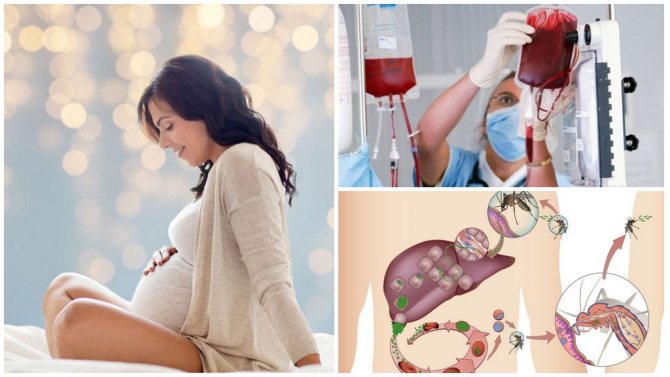

The causes of malaria
In areas with high endemic rates of malaria, children from 6 months to 5 years old were recognized as the main sources of parasites. They often get sick in an atypical form, which contributes to late diagnosis and the development of an infectious focus. As a result, the disease spreads several times faster.
Diagnosis of the disease
A preliminary diagnosis is made when an enlarged spleen and liver are found, as well as regular attacks of fever. A blood smear is taken to confirm the diagnosis. Blood sampling for analysis is done from a finger. The examination of the smear is carried out on a sterile glass under a microscope.
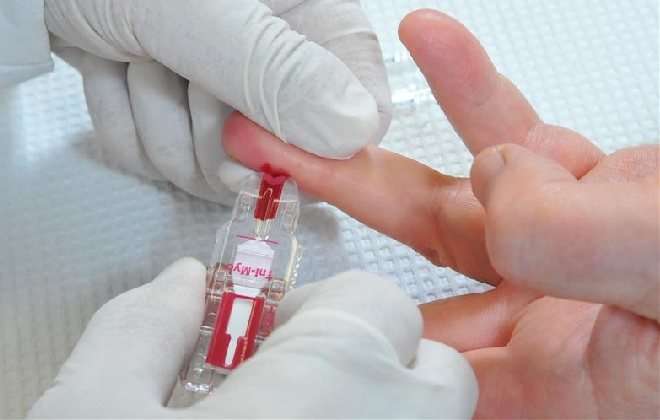

It is important to identify the causative agent of the disease in a timely manner in order to avoid further spread of the infection.
How the disease manifests itself in humans
After infection, the human body in serious dangersince it starts intoxication process... When merozoites begin to enter the bloodstream, along with it toxic substances arrive, which are the result of the vital activity of the parasite and the decomposition of hemoglobin.
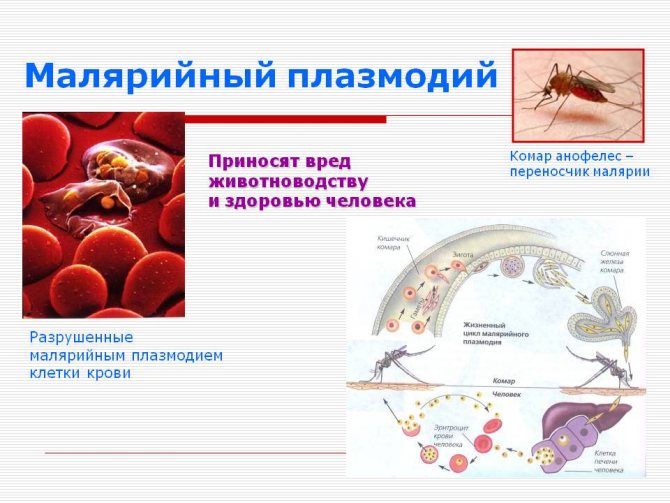

Among the most common side symptoms are:
- A sharp rise in temperature up to 40 degrees.
- Chills.
- Headaches of varying intensity.
- Painful sensations in the muscles.
- Fever may last within 2 hours.
As soon as the fever subsides, the patient has a strong dry mouth and constant feeling of thirst... Throughout the entire time of the disease, it is diagnosed in the order 10-15 attacks a fever that suppresses the immune system.
Signs of infection
Malaria is considered a parasitic disease of an infectious nature, occurring with:
- a significant increase in temperature;
- anemia;
- an increase in the size of the spleen and liver.
The latency period is approximately a week. Fever attacks begin at a time when the merozoites leave red blood cells.
Malaria is characterized by an acute course: the temperature rises, the patient suffers from severe chills. The latter, after an hour, changes to fever. The temperature sometimes rises above 40 C. A person can be delirious, he is tormented by severe headaches. After a certain period, the temperature suddenly drops, the person weakens, he is tormented by increased drowsiness. Depending on the type of malaria, these attacks are repeated after a certain period.
Parasitic unicellular
The simplest have mastered many habitats: soil, fresh and salt water bodies, swamps. Among them there is also a group of parasitic unicellular organisms. They develop in various organs of animals and humans, while causing serious diseases.
One of them is the malaria plasmodium. The size of this parasite is microscopic. Depending on the type, the plasmodium cell can have the form of a ball, an elongated cord or a ring. In total, there are about 180 of them in nature. But in the human body 10 species parasitize, of which 5 are the most dangerous.
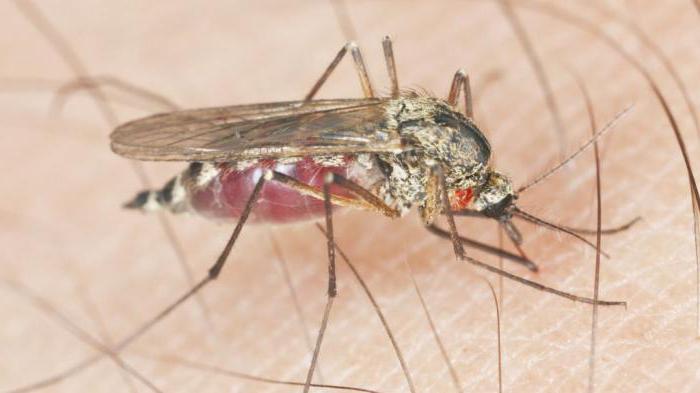

Treatment
If malaria is suspected or detected, the patient is urgently admitted to the infectious diseases department.
Medication includes taking the following medications:
- Antimalarial agents of natural origin: Quinine and Artemisin.
- Sulfonamide preparations.
- Antibacterial agents: macrolides and tetracyclines.
- Antifolic drugs: Pyrimethamine.
- Synthetic products: Radokhin, Plaquenil and Primakhina.
- Combined medicines: Fansidara.


The treatment regimen for uncomplicated malaria is shown in the table.
Malaria form
Medicines
Three-day and four-day malaria
Complex reception of Delagil and Primahin
Tropical malaria
Fansidar, assigned in case of resistance of Plasmodium to Delagil; Primakhin in a complex with Delagil
And also drug therapy includes taking the following drugs:
- with signs of dehydration - intravenous administration of Rheopolyglucin or 5% glucose;
- antipyretic drugs;
- at reduced pressure: Mezaton or Adrenaline;
- for hormone therapy Hydrocortisone;
- with anemia: blood transfusion, folic acid, iron supplements.


The patient's nutrition should be fractional.
IV. Fulleborn method - floating (flotation).
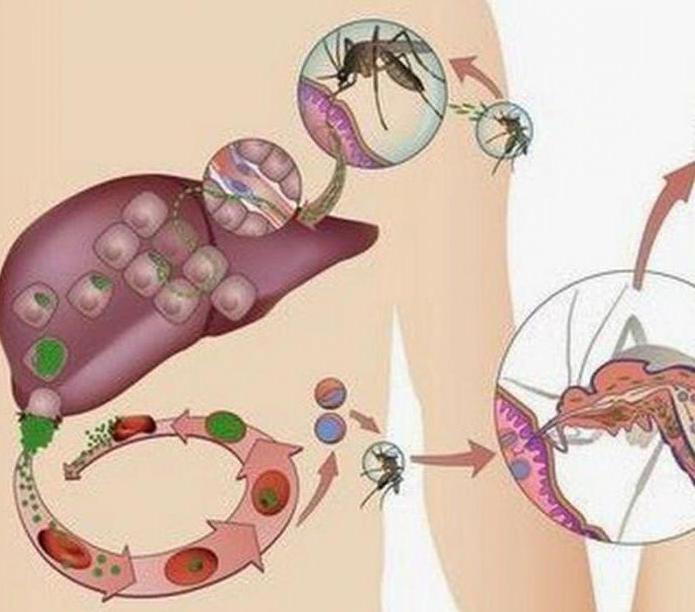

This method is based on the property of helminth eggs to float in saturated saline solutions (350 g of table salt 1 liter of boiled water = filter through cheesecloth). A solution is used that has a density greater than helminth eggs (eggs are lighter).
- Mix one part of feces with 20 parts of saturated sodium chloride (NaCl) solution.
- The specific gravity of the solution is 1.18. Add the solution gradually.
- Remove large particles of faeces.
- Leave the mixture to settle for 40-60 minutes.
- Eggs of helminths with a lower specific gravity than the solution will float to the surface.
- Remove a few drops from the surface with a wire loop (diameter - 1 cm) and transfer to a glass slide.
- Cover with a cover slip and examine.
Trematoda eggs and infertile Ascaris eggs cannot be detected with this method. The eggs of these helminths and the eggs of Trichuris trichiura can be found in the sediment.
Possible complications
In the absence of correct or timely treatment, the following complications may develop:
- malaria coma;
- anemia;
- a sharp increase in the spleen can provoke its rupture;
- pulmonary edema;
- acute form of intravascular hemolysis;
- malaria algid. As a rule, such vascular shock is fatal for the patient;
- acute renal failure;
- sudden bleeding of the gums, nasal mucosa or stomach.
Malaria kills up to 3 million people every year. The most dangerous is the tropical form of the disease.
Vi. Krasilnikov method
- Stir feces (2.5 g) in 1% - 1.5% detergent solution (20-30 ml). Detergent (detergent or cleaning agent) - "Lotus", "Extra", etc.
- Defend for 24 hours or centrifuge for 1 min. At 1000 rpm
- As a result, 3 layers of suspension are formed. The eggs are concentrated above the bottom layer.
- Prepare 2-3 preparations after centrifugation or take with a pipette from the surface of the lower layer.
- Explore.
Prophylaxis
Unfortunately, modern medicine has not yet developed a malaria vaccine. For this reason, prevention is considered very important. In endemic areas, mosquitoes are exterminated using insecticides. As an individual protection from Anopheles mosquitoes, clothes that cover the whole body and the use of various repellents are used.
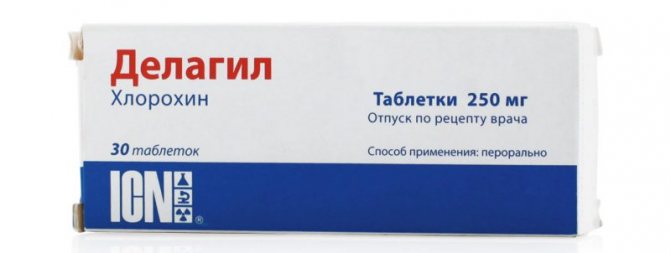

Pharmaceuticals produces drugs that are recommended for prophylaxis before leaving for cities with the spread of malaria. One of these means is Delagil.
The medicine is contraindicated for people suffering from:
- severe heart failure;
- impaired liver or kidney function;
- reduced hematopoietic function.
In addition, taking the drug is prohibited for women during the period of bearing a child and for children in preschool age. Doctors recommend continuing to take Delagil for another month.
Plasmodium malaria is a single-celled parasitic microorganism that provokes such a dangerous disease as malaria. This parasite has a rather complex developmental cycle that requires replacement of hosts. Anopheles mosquito or malaria mosquito is considered the main host. Man plays the role of an intermediate host. Malaria is a very dangerous and severe disease. In some situations, the illness threatens the patient's life.
be careful
According to statistics, more than 1 billion people are infected with parasites. You may not even suspect that you have become a victim of parasites.
In men, parasites cause: prostatitis, impotence, adenoma, cystitis, sand, kidney and bladder stones.
In women: pain and inflammation of the ovaries. Fibroma, fibroids, fibrocystic mastopathy, inflammation of the adrenal glands, bladder and kidneys develop. As well as heart and cancer.
We want to warn you right away that you do not need to run to the pharmacy and buy expensive medicines, which, according to pharmacists, will exterminate all parasites. Most drugs are extremely ineffective, and they also cause tremendous harm to the body.

